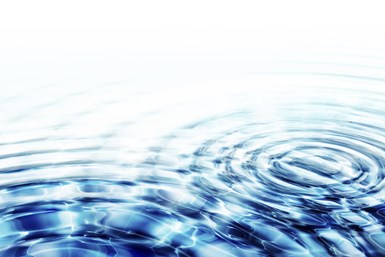The Basics of Cleaning with a Parts Washer
Better Engineering answers the question of “What do I need to know about an aqueous parts washer and its process?”

Most aqueous parts washing systems use the same basic components or circuits.
Q: I’m new to industrial parts cleaning. What do I need to know about an aqueous parts washer and its process?
A: First, whether you are washing machined metal parts, your car or dishes at home, these four factors are consistent for virtually all water-based cleaning applications.
- Time: The longer the part is exposed to the wash or rinse solution, the better the part will clean and rinse.
- Temperature: Cleaning efficacy increases as the water temperature increases, until the top operating temperature of the chemical solution is reached.
- Chemical and concentration: Chemical and concentration are selected to remove a specific contaminant from a part without harming the part material.
- Impingement: In spray washers, spray impingement is defined as the pressure and volume of the spray. The distance from the spray jet/nozzle to the part is also an important factor. The closer the nozzle is to the part, the stronger the spray impingement. Ultrasonics also increase impingement in immersion systems.
Most aqueous parts washing systems use the same basic components or circuits, which include:
- Pumping circuit: A pump is used to spray the parts with cleaning solution or it is used to enhance cleaning in immersion systems via spray under immersion.
- Heating circuit: Most aqueous cleaning systems use a heated solution (water and detergent) to cut oils and other organic soils. Electric, natural gas/propane and steam are options for heating a tank. Typical operating temperatures are 130°F to 190°F.
- Spray bar and nozzles: For spray applications, spray bars and nozzles are used to direct the cleaning solution onto the part. Depending on the part geometry, these spray bars are either fixed or oscillating to enhance cleaning.
- Controls: Control types vary with the type of washing system. The controls on a single-stage, wash-only machine can be as simple as a timer, thermostat and toggle switches for other controls. In more complex multistage systems, PLCs are used to control heat, cycle times, stages, show fault conditions and provide Ethernet connectively.
- Sump/tank/process chamber: Construction material for most applications is stainless steel, either 304 or 316, for more aggressive chemistries. Mild steel should only be used in applications with very high oils. Good quality machinery uses heavier gauges of materials.
Beyond learning the basics of parts washing equipment, know that cleanliness testing and rinsing are critical to parts cleaning as well.
How Clean is Clean and How is it Tested?
Clean is a subjective term. It is amazing how many companies lack written cleanliness specifications. Cleaning specifications vary when doing in-process versus final cleaning. There are several common techniques used to measure cleanliness:
White glove and cotton swab testing: This simple test consists of wiping the surface of the part with a clean, white glove or a clean cotton swab. Once completed, the glove or swab is inspected for evidence of residuals on the part after the washing process. You must determine visually if the part is a pass or fail.
Dyne testing: Dyne tests offer a quick way to measure surface wetting or surface tension of a part. It is generally the easiest method of determining how much contaminate (such as oils, waxes, cutting fluids and so on) are on the surface of a part. A series of pens such as magic markers or simple inks are used to mark a flat area of a part. If dyne ink beads up, similar to how water beads up on a newly waxed car, this is considered to be a failed test. The operator would then use the next level of inks until a test passes to give a general overview of the part surface’s cleanliness.
Millipore or gravimetric cleanliness testing: This process involves washing a part with a solvent, either before cleaning to establish how dirty a part is or after cleaning to determine how clean it is. Usually a chemical such as acetone is used to ensure that all hard particles (such as chips, burs, metal shavings and other similar contaminates) are removed from the part. After the part has been washed, the solution is captured in a sterile container and run through a filter system that separates all nonsoluble contaminates from the chemical that was used to wash the part. The resulting contaminates, caught in the filter system, are then analyzed under a microscope to give accurate data about the amount, weight, size and type of contaminates.
Rinsing is as Important as Washing
Parts are only as clean as the last rinse. The purpose of rinsing is not to rewash the parts, but to remove detergent residue. Adding additional rinse stages will improve cleaning performance, but this will add cost and footprint. Furthermore, a fresh water rinse can improve overall cleanliness. A fresh rinse can come in the forms of tap, reverse osmosis water or deionized water. In most cases, this is the last rinse and it overflows into the previous tank. This cascading effect keeps the previous rinse tank cleaner. However, the displaced water needs to be captured or go to a drain.
About the Author
Mark Adams
Mark Adams is the western regional sales manager for Better Engineering. He has more than 27 years of sales and marketing experience in the aqueous cleaning industry. Contact: mark.adams@betterengineering.com
Related Content
Meeting Stringent Cleaning Goals With Modular Ultrasonic System
A knee implant manufacturer implements an advanced cleaning system that meets its tight cleaning requirements, including documenting, validating and tracing the entire cleaning process.
Read MoreOvercoming 3 Common Challenges With Automated Particle Counting
Facing difficulties while performing particle analysis is normal but should not be discouraging. Here are some ways to handle the most prevalent issues that can arise.
Read MoreMultisolvent 100 Vacuum Vapor Degreaser Provides Contactless Cleaning
PMTS 2023: With applications in the most demanding industrial sectors, the machine is especially useful for cleaning parts in the turning, precision mechanics, medical and aerospace industries.
Read MoreKyzen Solvents Provide Safe Parts Cleaning
The SLV901 and SLV803 solvents are formulated to maintain cleaning efficacy while providing a safe, environmentally friendly alternative to processes that use PFAS and HFCs.
Read MoreRead Next
Optimizing Aqueous Cleaning Requires Proper Design and Maintenance
A well designed and proactively managed aqueous washer system provides premium performance.
Read MoreChoosing an Aqueous Parts Washing System
As machining technology has advanced, expectations for product quality have increased as well.
Read MoreCleaning Parts Cost Effectively
A shop should look at all aspects of the production process to maximize productivity. This includes selecting an efficient cleaning system.
Read More






















